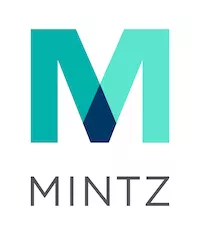- within Law Practice Management topic(s)
GLOSSARY OF KEY MARKET TERMS
|
Term |
Meaning |
|
Additionality |
A reduction in GHG Emissions is deemed "additional" only if the reduction would not have taken place in the absence of the incentive created by the voluntary carbon offset market. Achieving "additionality" increases the value of the carbon offset. |
|
Avoidance Projects |
One of the two main types of projects that produce carbon credits or offsets. Avoidance projects avoid the release of GHG Emissions into the atmosphere by reducing activities that tend to emit large numbers of GHG Emissions or by protecting natural resources. |
|
Carbon Credits |
Tradeable permits that each represent the right to emit one metric ton of carbon dioxide or other greenhouse gases. |
|
Carbon Offsets |
Measures of the amount of carbon avoided or permanently removed from the atmosphere. A carbon offset represents one metric ton of carbon dioxide or equivalent greenhouse gases avoided or removed. |
|
Certified Emissions Reduction (CER) Credit |
Relating to the Kyoto Protocol, a marketable carbon credit generated by the Clean Development Mechanism (CDM) that represents the equivalent of offsetting one metric ton of carbon dioxide. A CER can be traded or sold to count towards meeting an industrialized country's GHG Emissions–reduction targets under the Kyoto Protocol. |
|
The Clean Development Mechanism (CDM) |
One of three market-based mechanisms introduced by the Kyoto Protocol to assist countries in finding ways to meet their GHG Emissions reductions targets. The CDM allowed industrialized countries to implement an emissions reduction project in a developing country and, in doing so, generate a marketable Certified Emissions Reduction (CER) credit. |
|
Climate Reserve Tons (CRTs) |
Tradeable carbon offsets issued by the Climate Action Reserve in the voluntary carbon market. |
|
Compliance Carbon Markets |
One of two categories of carbon markets that allows participants to buy and sell carbon credits or carbon offsets to comply with rules or regulations imposed by regulatory or governance organizations. |
|
Core Carbon Principles |
A framework and assessment procedure for identifying and issuing carbon offsets released by the Integrity Council for the Voluntary Market in 2022. |
|
Corresponding Adjustments |
An accounting mechanism that requires a host country to deduct (or "un-count") a sold carbon offset from its own NDCs so that the buyer country can count the offset against its NDCs. This mechanism was established at Glasgow with the ratification of Article 6 of the Paris Agreement and seeks to address double-counting. |
|
Double Counting |
The idea that multiple entities are claiming benefits from the same carbon offset. |
|
Emissions Reduction Purchase Agreement (ERPA) |
A legally binding contract between buyers and sellers of carbon offsets. |
|
Environmental, Social and Governance (ESG) Objectives |
Objectives set within a company in order to manage the organization's impact on social and environmental sustainability directly. The trading of carbon offsets in the voluntary market can help companies meet their ESG objectives. |
|
Glasgow Climate Change Conference |
A 2021 climate conference that ratified Article 6 of the Paris Agreement. |
|
Greenhouse Gas (GHG) Emissions |
The release of gases that contribute to the greenhouse effect via human activity. Both carbon credits and carbon offsets aim to reduce GHG Emissions. |
|
The International Emissions Trading (IET) Mechanism |
One of three market-based mechanisms introduced by the Kyoto Protocol to assist countries in finding ways to meet their targets. The IET mechanism allowed industrialized countries with unused, excess carbon allowances to sell these excess allowances to other industrialized countries that exceeded their targets. |
|
Internationally Transferred Mitigation Outcomes (ITMOs) |
One of two market-based approaches provided under Article 6 of the Paris Agreement that allows countries to meet their NDC obligations by trading for and acquiring carbon offsets earned from the reduction of GHG Emissions. ITMOs are the new unit of carbon reduction established by the Paris Agreement for international carbon markets that will replace CERs established under the Kyoto Protocol. |
|
Joint Implementation (JI) |
One of three market-based mechanisms introduced by the Kyoto Protocol to assist countries in finding ways to meet their targets. The JI allows industrialized countries to collaborate jointly with each other in pursuing and implementing emissions reduction projects in order to meet their Kyoto targets. |
|
Kyoto Protocol |
An international treaty that came into effect in 2005, setting legally binding targets for 37 industrialized countries to limit or reduce their overall greenhouse gas emissions. |
|
Nationally Determined Contributions (NDCs) |
National plans highlighting climate change mitigation, including climate-related targets for greenhouse gas emission reductions. The Paris Agreement requires each country to create and submit NDCs on a five-year cycle. |
|
Removal Projects |
One of two main types of projects that produce carbon credits or offsets. Removal projects are aimed at removing GHG Emissions already released into the atmosphere by using nature-based and or technology-based methods. |
|
Retirement |
The process whereby a carbon offset is used and removed, meaning that the carbon offset can no longer be sold or traded on any exchange. Retirement occurs after the reduction in GHG Emissions has been deducted from the final owner's carbon footprint. |
|
Paris Agreement |
A legally binding, international treaty on climate change adopted in 2015 that effectively replaced the Kyoto Protocol. The Paris Agreement called on both industrialized and developing countries to set and meet emissions goals. |
|
Sustainable Development Mechanism (the SDM) |
One of two market-based approaches provided under Article 6 of the Paris Agreement that allows countries to meet their NDC obligations by trading for and acquiring carbon offsets earned from the reduction of GHG Emissions. The SDM aims to reduce overall global GHG Emissions. |
|
Validation and Verification Body (VVB) |
An independent third party pre-approved by the carbon offset registry that conducts an audit of the project design during the auditing stage of the carbon offset certification process. |
|
Verified Carbon Units (VCUs) |
Tradeable carbon offsets issued by Verra in the voluntary market. |
|
Verified Emission Reductions (VERs) |
Tradeable carbon offsets issued by the American Carbon Registry in the voluntary market. |
|
Vintage of a Carbon Offset |
The year GHG Emissions reductions for an issued offset were deemed to have occurred. The vintage of a carbon offset can be indicative of the quality of the carbon offset and its underlying project, and thus is a principal factor in determining the carbon offset's value. |
|
Voluntary Carbon Markets |
One of two categories of carbon markets. Voluntary carbon markets allow for the trading of carbon offsets that are not bought or sold on the compulsory carbon markets to meet GHG Emissions requirements imposed by regulatory bodies. Most carbon offsets are traded in voluntary markets and cannot be used to achieve GHG Emissions reduction targets under an applicable compliance regime. Certain carbon offsets, however, are permitted to be used to achieve compliance with a compulsory regime. |
I. INTRODUCTION
As the need to reduce the emission of greenhouse gases has grown more urgent over the last quarter century, key stakeholders across the globe have sought to forge effective paths to make a measurable difference in the health of the planet. Starting in the 1990s with the Kyoto Protocol, governments and multilateral organizations led the way by creating avenues for countries to participate in carbon reduction efforts through the use of carbon credits and carbon offsets. The mechanisms introduced by the Kyoto Protocol led to the creation of global and regional compulsory compliance regimes requiring both countries and corporate entities to limit their carbon emissions. Beyond these mandatory regimes, the sharp rise in public concern over the climate has increasingly catalyzed companies to take steps to reduce their carbon emissions on a voluntary basis. In order to reach their goals, companies are turning to voluntary carbon markets, where they are able to invest in renewable energy projects that generate carbon offsets, as well as purchase and sell carbon offsets, as a means of contributing to the removal of carbon from the atmosphere. Activity surrounding voluntary carbon markets has expanded steadily since their introduction, with current estimates projecting that the market for carbon offsets may be worth over US$50 billion by 2050.i
Despite the growing importance of both carbon credits and offsets, the fundamentals of these tradeable units and their associated markets are still not well understood by most. This article seeks to provide a broad overview of carbon credits and carbon offsets in order to facilitate a better awareness of the growth and practical workings of these markets. It commences by surveying the establishment and evolution of carbon markets stemming from the entry into the Kyoto Protocol in the late 1990s. It then delves into the distinctions between carbon credits and carbon offsets, as well as the difference between compulsory and voluntary carbon markets. The article includes a brief journey through the typical lifecycle of a carbon offset, from creation to retirement. It concludes with a few broad observations regarding the opportunities and risks presented by the carbon markets.
II. CREATION OF CARBON CREDITS AND THE ESTABLISHMENT OF CARBON MARKETS
The focus on carbon credits as a means of combating climate change is relatively new. The concept of an international carbon market was first established by the Kyoto Protocol in 1997. Initially signed by 180 countries, the Kyoto Protocol came into effect in 2005, setting legally binding targets for 37 industrialized countries to limit or reduce their overall greenhouse gas emissions ("GHG Emissions") by an average of at least 5% below their respective 1990 levels during the period of 2008-2012.1
The Kyoto Protocol imposed these binding targets only on industrialized countries in express recognition of the responsibility they bear for the state of the climate as a result of their GHG Emissions over the course of a century-and-a-half of robust industrialization. Conversely, the Kyoto Protocol provided developing countries with voluntary targets or, in the case of China and India, exemptions from targets altogether.
While industrialized countries were directed to meet their targets principally through national measures orchestrated by governmental fiat, the Kyoto Protocol also introduced three market-based mechanisms to assist countries in finding ways to meet their targets. These mechanisms also aimed to encourage participation in emission reduction efforts by the private sector and by developing countries exempted from Kyoto's binding targets.
These market-based mechanisms were:
- The Clean Development Mechanism ("CDM")
- Joint Implementation ("JI")
- The International Emissions Trading ("IET") mechanism.
The creation of these market-based mechanisms introduced and established what ultimately became known as the international carbon market.
Article 12 of the Kyoto Protocol created the framework for the CDM. The CDM allows any of the 37 industrialized countries bound by the Kyoto targets to implement an emissions reduction project in a developing country and, in doing so, generate a marketable Certified Emissions Reduction ("CER") credit. Each CER represents the equivalent of offsetting one metric ton of carbon dioxide and can be traded or sold to count towards meeting an industrialized country's GHG Emissions reduction targets under Kyoto.
Article 7 of the Kyoto Protocol established the JI, a mechanism similar to the CDM. Under the JI, industrialized countries could jointly collaborate with other industrialized countries in pursuing and implementing emissions reduction projects in order to meet their Kyoto targets.
The IET, an international trading program, sprung from Article 17 of the Kyoto Protocol. The IET allowed industrialized countries with unused, excess carbon allowances to sell these excess allowances to other industrialized countries that had otherwise exceeded their targets.
In order to operationalize the market-based frameworks constituted by the Kyoto Protocol, and specifically the CDM, and to spark the development of the international carbon market, a model Emissions Reduction Purchase Agreement ("ERPA") was crafted in 2001 under the aegis of the World Bank.2 The advent of the ERPA marked a seminal event in the evolution of carbon markets as it allowed buyers and sellers of CERs to memorialize the transaction in a legally binding contract. While each ERPA is uniquely tailored to the requirements of the project with which it is associated, most ERPAs contain provisions that:
- Specify the quantity and price of CERs to be delivered to the buyer and related payment schedules;
- Provide for risk allocation and management between the parties;
- Delineate the consequences of non-delivery and default; and
- Specify the other obligations of the buyer and the seller with regard to both the transaction for the sale and purchase of CERs and the underlying project giving rise to the emission reduction credits.
Initially conceived to create a process for the sale of CERs under the CDM, the ERPA grew in use and importance globally over the years, and ultimately came to form the basis for the sale of other renewable attributes, including the sale of Renewable Energy Certificates or RECs.ii
The second phase of carbon trading kicked off in 2015 when 114 countries ratified the Paris Agreement. The Paris Agreement effectively replaced the Kyoto Protocol, whose binding targets were set to expire in December 2020.iii
Whereas the Kyoto Protocol had set emission-reduction targets for industrialized countries only, the Paris Agreement called on both industrialized and developing countries to establish and meet emissions goals. The Paris Agreement reflected the growing urgency of the climate crisis and the broad recognition that in order to be effective, measures to combat climate change must be pursued by all carbon emitters, regardless of their varying culpability in creating the present exigency. The Paris Agreement aimed to set an outside limit for global warming to a point below 2 °C above pre-industrial levels, with the stated aspiration of limiting the temperature increase to a threshold of 1.5 °C above pre-industrial levels. These limits were to be achieved by having each country create and submit its plans for climate action – known as Nationally Determined Contributions ("NDCs") – on a five year cycle.
One of the key elements of the Paris Agreement can be found in the all-important Article 6, the provisions of which established two new market-based mechanisms for creating and trading carbon offsets: the Sustainable Development Mechanism (the "SDM") and the internationally transferred mitigation outcomes ("ITMOs"). These market-based approaches provided under Article 6 allowed countries to meet their NDC obligations by trading for and acquiring carbon offsets earned from the reduction of GHG Emissions produced by qualifying projects.iv
Article 6.4 established the SDM, a centralized carbon market that allows trading of carbon offsets created by specific projects implemented jointly by countries party to the Paris Agreement. Article 6.4 aimed to replace the offsetting mechanism provided under Kyoto's CDM, as well as the collaboration mechanism provided under Kyoto's JI. The most notable difference between the SDM and its predecessor mechanisms is that the SDM seeks to reduce overall global GHG Emissions, while the CDM and JI had essentially shifted the location of GHG Emissions without necessitating an overall reduction in GHG Emissions. Under the CDM and JI, each metric ton of carbon reduction achieved by a developing country and measured by the creation of a CER – the credits issued by the CDM under the Kyoto Protocol – allowed an industrialized country to emit one additional metric ton of carbon. Any offsets created by projects traded on the SDM, on the other hand, must result in an overall reduction of global GHG Emissions without allowing for a corresponding increase in GHG Emissions elsewhere. In addition, the offsets traded pursuant to the SDM must be over and beyond what a country has committed under its NDCs.
Article 6.2 of the Paris Agreement provided for the international trading of ITMOs, which are the new unit of carbon reduction for international carbon markets intended to replace the CERs established under the Kyoto Protocol. ITMOs are used by countries to meet their respective NDCs: countries that have met or exceeded their NDC goals can trade their excess ITMOs with countries that lag behind in meeting their commitments, with the caveat that the selling country must make a corresponding adjustment in its NDCs to "uncount" the ITMO it is trading. In order to ease the transition to the new trading mechanisms created under Article 6.2, certain CERs generated between 2013 and 2020 were to be eligible for conversion into ITMOs and to count towards a country's NDC commitments.v
Footnotes
1 The Kyoto Protocol's compliance mechanism is considered among the most robust ever adopted for a multilateral agreement. The compliance mechanism consists of a facilitative branch that provides advice and assistance to parties to encourage compliance, and an enforcement branch empowered to take hard actions. The enforcement branch determines three different forms of non-compliance: (1) with the emission targets, (2) the methodological and reporting requirements, and (3) the eligibility requirements for participation in the Kyoto Protocol's flexibility mechanisms. The Kyoto Protocol also requires a non-complying country to take specific actions depending on the nature of non-compliance. For example, in the case of non-compliance with emission targets, the Kyoto Protocol requires the offending country to make up the difference between its actual emissions and its target obligations, plus an additional 30% deduction, in the next compliance period. Meaning that, for every metric ton of emissions by which a country exceeds its Kyoto Protocol target, its allocation of emissions for the subsequent compliance period would be lowered by an additional 1.3 metric tons as a penalty. Whether this penalty has had any effect in deterring non-compliance is questionable, however, as it is unclear how a country could be forced to meet its obligations under a subsequent period if it has already failed to meet its commitments under a prior one. Additionally, since countries negotiate their own commitments under the Kyoto Protocol, a non-complying country could negotiate a less-stringent target for the next commitment period to accommodate for the penalty, negating the impact that the enforcement mechanism would have on the country's compliance.
2 One of the authors of this article, Mintz partner Ayaz Shaikh, advised the World Bank in conceiving, structuring, and drafting the model ERPA, and in its usage in the first investment of the World Bank's Prototype Carbon Fund (PCF). That investment was for the Liepaja Solid Waste Management Project in the Republic of Latvia in 2001.
i Graham J. Stuart, "COP26 – Prospects for Carbon Offsets and Markets," Baker McKenzie publication, September 30, 2021, https://www.bakermckenzie.com/en/insight/publications/2021/09/cop26-prospects-for-carbon-offsets-and-markets.
ii James Chen and Caitlin Clarke, "Emissions Reduction Purchase Agreement (ERPA)," Investopedia, April 27, 2022, https://www.investopedia.com/terms/e/erpa.asp.
iii Gold Standard.
iv Nicolas J.S. Lockhart, Maureen M. Crough, Dominic Coppens, Katherine Connolly, and Jason J. Lawler, "The Opportunities and Risks of Carbon Credits on the Pathway to Net Zero," Sidley, March 2022, https://www.sidley.com/en/ insights/publications/2022/03/the-opportunities-and-risks-of-carbon-credits-on-the-pathway-to-net-zero.
v Cristina Brooks and Kevin Adler, "COP26: Article 6 rulebook updated, but remains work in progress," HIS Markit publication, November 15, 2021, https://cleanenergynews.ihsmarkit.com/research-analysis/cop26-article-6-rulebook-update-but-remains-work-in-progress.html.
To read the full article click here
The content of this article is intended to provide a general guide to the subject matter. Specialist advice should be sought about your specific circumstances.




